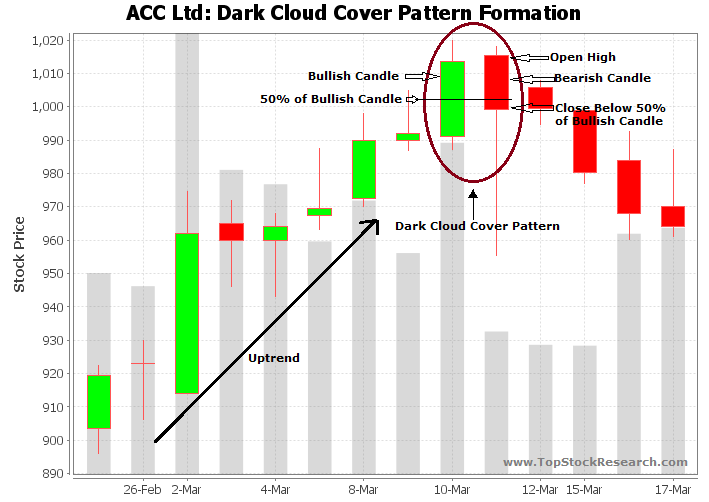

There is the potential for coordination of a global corporate strategy. A parent company usually selects companies to become wholly-owned subsidiaries that it considers vital to its overall success as a business. In some countries, licensing regulations make the formation of new companies difficult or impossible. If a parent company acquires a subsidiary that already has the necessary operational permits, it can begin conducting business sooner and with less administrative difficulty. Like the regular subsidiary, wholly-owned subsidiaries help parents tap into new markets, especially those in foreign countries. This can be done through green-field investments, which involve setting up brand new entities from the ground up.
No prior approval is required from RBI in the case the company is allowed to have 100% FDI. This blog explains how the wholly-owned subsidiary mechanism works and its importance in business growth. Add wholly-owned subsidiary to one of your lists below, or create a new one. Since a beneficial interest is created therefore, the declaration as prescribed u/s 89 of the Act shall be given by Mr. A and M/s XYZ Ltd and subsequently by JKL Ltd. Under the erstwhile Companies Act, 1956, section 153 specifically stated that trust cannot become a member of a company. However, under the Act a trust can become a member if there is a specific provision to the same effect in the articles of association of the company.

It provides a benefit of cost synergies in such a way by using a common financial system, sharing the administrative cost and other expenses between parent & subsidiaries. Two or more persons can hold one or more shares jointly and shall be treated as a single member. No objection letterfrom the parent company for use of the name of the parent company or the part thereof in the same of the proposed company. A Private limited company must have minimum of two directors and can have maximum of fifteen directors. It is recommended that at least one director be an Indian Citizen and Indian Resident, while other Boards members can be of any nationality or residency.
Income Tax Filing
As noted above, a subsidiary is a separate legal entity for tax, regulation, and liability purposes. Parent companies can benefit from owning subsidiaries because it can enable them to acquire and control companies that manufacture components needed for the production of their goods. This is especially true if the parent wants to get into another market, such as a different country.
A wholly-owned subsidiary holds no responsibilities to minority owners, in contrast to other subsidiaries. Financial statements from all subsidiaries are typically consolidated by the parent company. As a result, the subsidiary is not responsible for producing separate financial statements. A wholly owned subsidiary’s financial performance are included in the parent firm’s consolidated balance sheet. A majority-owned subsidiary is a company whose 51%-99% of the common stock is owned by the parent company.

However, in the case of a wholly-owned subsidiary, 100% of shares of the acquired company belongs to the parent company. A wholly-owned subsidiary is a corporation with 100% shares held by another corporation, the parent company. Although a corporation may become a wholly-owned subsidiary through take over by the parent company or split off from the parent company. With a wholly-owned subsidiary, the parent company owns all of the common stock. Suppose the foreign-based subsidiary distributes dividends to shareholders of the parent company, then it will be subject to taxation.
Wholly Owned Subsidiary
Other than tax benefits, it provides significant financial resources. The profits from either company can be invested in assets or to expand the firm. Where a subsidiary company has total voting power exercisable by the holding company only, i.e. 100% of the paid-up capital is held by the holding company, in such case the subsidiary is called a wholly-owned subsidiary. Specific object- The aim of the project is to study subsidiary and wholly owned subsidiary company and identify the difference between subsidiary and wholly owned subsidiary company. A wholly owned subsidiary is an entity whose stock is entirely owned by another entity. A subsidiary may become wholly owned as the result of an acquisition, or because the parent spun off certain assets and liabilities into a separate entity.
2- Beneficial owner shall file with COMPANY, a declaration in form MGT-5 within 30 days of entering his name in register of members or change therein as the case may be. 1- Registered owner shall file with COMPANY, a declaration in form MGT-4 within 30 days of entering his name in register of members or change therein as the case may be. Under this section Registered owner/ Beneficial owner/ Company is required to intimate to ROC after entering his name in register of members or change therein the declaration so filed. Save taxes with ClearTax by investing in tax saving mutual funds online. Our experts suggest the best funds and you can get high returns by investing directly or through SIP. Cash Flow StatementsA Statement of Cash Flow is an accounting document that tracks the incoming and outgoing cash and cash equivalents from a business.
There are no restrictive provisions under the Companies Act, 2013 which prohibits the appointment of any foreign nationals or NRI as a director in an Indian Company. However, the provision under section 149 states that every company must have at least one director who is a resident of India. The parent company can easily confide their confidential data, like business secrets and expertise easily.
- The control is exerted through ownership of more than 50% of the voting stock of the subsidiary.
- Another type of beneficial entity is a wholly owned subsidiary for those who want to set up a permanent establishment in India.
- The parent business often holds more than 50% of the subsidiary’s voting shares .
- Wholly owned subsidiaries are those companies in which Parent Company owns 100% shares of the subsidiary which allows the parent company to appoint a board of directors of theIndian Subsidiaryor control the subsidiary company.
A public limited company is a company, where public is interested and it is required to comply with the lots of rules and regulations framed by the Companies Act, 2013. Generally, foreign companies incorporate private limited company in India. The parent business can significantly lower its tax obligation and take advantage of deductions by consolidating its accounts. Wholly-owned subsidiaries have legal control over their management, but the parent company can implement changes on some level. However, the financial results of a wholly-owned subsidiary are disclosed in the parent company’s consolidated financial statement. The information contains in this web-site is prepared for educational purpose.
Vocabulary, Advantages & Disadvantages
This means getting approvals, building facilities, training employees, among other things. The other way is to make an acquisition of an existing company in the target market. Subsidiaries generally answer to their own management teams and directors while parent companies are normally in control of wholly-owned subsidiaries.
Recommended Articles
They can either create a new company or buy an existing company that is well-known in the desired market to accomplish this. At the time of Issuance of shares to Foreign Holding Company, Issuing Company must comply with the FEMA provision. Applicant- company needs to file Form FC-GPR with RBI within 30 days from the date of receipt of Money in respect to the shares allotted at the time of Incorporation of a Wholly Owned Subsidiary in India. In the new web-based form SPICe+, the applicant can mention only one proposed name for the proposed company along with all other details and required documents. Foreign Investment in the following sectors/activities is, subject to applicable laws/ regulations, security, and other conditionalities.
After thoroughly reviewing all these essentials, the parent company can issue the financial statements. The parent company controls the management of the subsidiary at some level. Both companies can combine their resources and size to bargain deals. The integration of both their teams can lead to better administration and development.
A parent company can set up a subsidiary in any country, and it will be treated as an independent company for taxation purposes. An unconsolidated subsidiary is treated as an investment on a parent company’s financial statements, not part of consolidated financial statements. It may increase if local legislation is considerably different from the laws in the parent company’s country. Therefore looking at both the advantages and disadvantages of a subsidiary company and a wholly owned subsidiary the researcher feels that he can safely conclude that a subsidiary company is more profitable than wholly owned subsidiary. For all the benefits that arise out of owning a subsidiary, the management of the subsidiary can be restricted by autonomy enforced by the parent company.
Wholly owned subsidiaries may be part of the same industry as the parent company or part of an entirely different industry. Sometimes, a company will spin off part of itself as a wholly owned subsidiary, such as a computer company spinning off its printer manufacturing division. Wholly-Owned Consolidated Subsidiary means any Consolidated Subsidiary all of the shares of capital stock or other ownership interests of which (except directors’ qualifying shares) are at the time directly or indirectly owned by the Borrower. The investor’s assets and the company’s liabilities are divided up by the subsidiary’s distinct corporate personality. Fully owned subsidiaries give the parent company the ability to diversify, control, and perhaps even lower its risk.
Sometimes, a subsidiary can do things that the parent company cannot do on its own. For example, a non-profit entity can create a for-profit subsidiary in order to raise revenue. While the subsidiary would be subject to federal income taxes, the parent company would remain exempt. A wholly-owned subsidiary is a company whose common stock is 100% owned by a parent company.
The content/information published on the website is only for general information of the user and shall not be construed as legal advice. While the Taxmann has exercised reasonable efforts to ensure the veracity of information/content published, Taxmann shall be under no liability in any manner whatsoever for incorrect information, if any. The Companies Act, 2013 and the Companies Rules, 2014 prescribes that application for registration of Private Company shall be filed with the Registrar within whose jurisdiction the registered office of the company is proposed to be situated. 10 Best Corporate Bond Funds in India to Invest in March Corporate bond funds are debt funds that invest at least 80% of the investment corpus in companies … Best Arbitrage Mutual Funds to Invest in India in March Arbitrage funds are hybrid mutual fund schemes that aim to make low-risk profits by buying and sell… You must submit the stamp duty for MOA & AOA and the filing fee for incorporation-related documents.
The parent company has operations of its own, and the subsidiary may carry on a related business. For example, the subsidiary might own and manage property assets of the parent company, to keep the meaning of wholly owned subsidiary liability from those assets separate. The wholly owned subsidiary and parent company can integrate their information technology and financial systems, resulting in reduced costs and expenses.
As more taxes are imposed on businesses with subsidiaries, the tax charged on the parent company may rise. Possesses or maintains control over more than 50 percent of the total voting power, either on its own or in conjunction with one or more of its subsidiary firms. Owning a wholly owned subsidiary may make it easier for the parent firm to continue operating in other markets, independent industries, or geographic locations. These elements provide protection from the market, trade, and geopolitical upheavals as well as from industry sector failures. Usually a bigger company, the parent company maintains control over several subsidiaries. Parent firms always have a controlling interest in their subsidiaries, regardless of how active they are with their subsidiaries.

